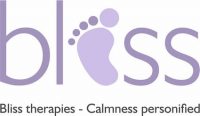http://www.bristolpost.co.uk/Reflexology-heal-body-treating-feet/story-27666085-detail/story.html
As with so many “alternative” therapies, reflexology has its roots in the ancient civilisations of China, India, North America and Egypt. Working on the principle that reflexes on the feet – and hands – act as mirror images of the body, this treatment is designed to encourage the body to balance and heal itself.
But although the practice may have been around for thousands of years, it’s not easy for everyone to get their head around the idea that applying pressure to the feet can make a difference to back pain, migraine or a grumbling tummy.
For explanation and demonstration, I turned to Tamsin Marshall, who’s been practising reflexology in Bristol for almost eight years. Beautifully poised (she’s also a musician and takes yoga classes), Tamsin is warm and open and I’m immediately at ease.
She seats me in a special chair – a bit like a sun lounger that tips backwards – so I’m almost lying down. With my feet up on a pillow in front of her and a warm blanket on the arm of the chair in case I need to cosy up, Tamsin takes brief notes about my general health, covering known problem areas, stress, digestion, sleeping and exercise patterns.
To help explain how reflexology works, she passes me coloured charts showing which points on the feet and hand correspond to which body part.
For example, the head is the big toe, the outside of each ball is a shoulder, while the stomach, liver and kidneys are concentrated across the instep, the digestive system between the instep and the heel, and there are specific points running along the side of the feet, from heel to big toe, representing each vertebrae.
Before the treatment begins, Tamsin checks that I’m physically and mentally comfortable, because that can help the effectiveness of reflexology. She explains: “Usually people relax during the treatment, but sometimes people can stay tense if they are particularly anxious or they have a lot of pain. Reflexology can still work if you’re tense, but the body is more receptive to becoming well if you’re in a relaxed state.
“The idea with reflexology is that you’re helping the body to work at its optimum level. It’s not so much about healing, I’m working on points that will help the body to balance itself – similar to acupuncture in that way.”
As she begins working, it takes me about two seconds to work out this lady has strong fingers! While there’s an element of massage, with associated relaxing and suppling qualities, there’s distinct and precise pressure applied too. It’s not painful, but there are tender spots which tally with various strained muscles and clicky joints.
I had mentioned a creaky lower back, neck and shoulders to Tamsin when she questioned me at the start and sure enough those spots on my feet felt “crunchy” to both of us. I had not, however, talked of a slightly dicky tummy, which she also quickly picked up. As she works, returning to these areas throughout the hour-long treatment, the tenderness diminished.
For the purposes of this feature we had been talking for much of the session, but Tamsin suggests I shut up, close my eyes and enjoy the remaining 10 minutes. It’s far from a difficult request with which to comply! When she’s finished, and in stark contrast to body massages which leave me relaxed but often groggy, I am feeling bright and energised, which is a good thing as I have to cycle back to the office.
This upbeat feeling continues for the remains of the day and the crunchiness, particularly in the neck, is better. It isn’t banished completely however, but then I wonder how it would feel had I returned for the recommended four to six sessions.
Reflexology is not purely about the physical body, however. Tamsin explains its subtleties: “There is a physical element to reflexology and I can feel crunchy areas, or areas are dipped or raised, or the colour of the skin is different, but it’s also about the client feeling tender areas – they can report back to me – but I might just sense through intuition that there’s an area I might need to work on. There’s a whole range of things that come together that I’ve built up over the years of practising.
“It’s also about respecting the client and where they’re at, letting them sleep if they need to, or cry, or some people really want to talk. It can be an emotional experience for some people. The emotional and physical body are very much linked together.”
Tamsin’s personal experience of reflexology goes back almost to childhood and led, in her twenties, to a change of career. She says: “I had some treatments when I was a teenager and it really helped with hormonal issues. I had a really good result from it and it really stuck in my mind until my mid-twenties when I was thinking about retraining from years working in offices.”
It’s probably not a coincidence, then, that at least half the people who come to Tamsin for treatment are women concerned with fertility. She continues: “It’s very good at balancing hormones, so that’s one of the reasons why people who are having issues with fertility come along.
“About 50 per cent of the people I see are either looking to get pregnant or are going through their pregnancy. It is particularly popular and talked about in ante-natal classes for example, and it’s even recommended by some midwives.
“The other half of my clients represent a complete mixture of problems, such as chronic fatigue and anxiety, digestive issues, muscular pain, or backache and migraines.”
If you think reflexology could work for you, more information is available from The International
Institute of Reflexology (www.reflexology-uk.net), The International Federation of Reflexologists (www.intfedreflexologists.org) and from Tamsin’s website (bristol-reflexology.co.uk).
Read more: http://www.bristolpost.co.uk/Reflexology-heal-body-treating-feet/story-27666085-detail/story.html#ixzz3jojzugmS
Follow us: @BristolPost on Twitter | bristolpost on Facebook

